Moving across the country or even to a different state is a monumental task that can feel like a full-time job. Between packing boxes and the maze of legalities and logistics, it's easy to feel overwhelmed. Add to that the emotional rollercoaster of leaving behind a familiar place, friends, and perhaps family, and you've got yourself a recipe for stress.
But here's the good news: you're not alone, and you've come to the right place. Whether you're relocating for a job, joining your life partner, or simply seeking a change of scenery, we've got you covered. With meticulous planning, the right resources, and a comprehensive long distance moving checklist, you can turn what seems like a Herculean task into a manageable — dare we say, enjoyable — experience.

In this in-depth article, Division 1 Moving & Storage will be your personal moving consultants, guiding you through every crucial aspect of your move:
- Planning and Scheduling: This is the structural foundation of any move. A well-crafted plan serves as a navigational chart that guides the entire process from beginning to end.
- Packing: This phase involves a combination of art and science, and it's where preparation meets execution. Proper packing techniques can make the difference between a smooth move and a problematic one.
- Choosing Movers: Selecting the right moving company is crucial for meeting both budgetary and logistical needs. The best fit will offer services that align with individual requirements and financial limitations.
- Additional Factors: Often overlooked yet crucial elements like budget management and transportation options also play significant roles in the moving process. Being aware of these can contribute to a more seamless and stress-free move.
Why Planning is The Foundation of Your Move
A solid plan acts as your relocation GPS, highlighting not only the destination but also the best path forward. Using tools like a detailed plan and checklist ensures a smooth move, giving you control and peace of mind during a potentially stressful time.

Crafting a Comprehensive Plan
A comprehensive plan serves as a roadmap for your long-distance move, offering a holistic view of the entire process. It delves into the specifics of each phase, explaining the "why" and "how" behind every task. This document provides contextual information and allows for flexibility, making it easier to adapt to unexpected situations or changes.
- Inventory: Start by listing all the items you'll be moving. This will help you determine the size of the moving truck you'll need, the amount of packing supplies required, and whether you need to sell, donate, or dispose of any items.
- Timeline: Create a week-by-week or even day-by-day timeline. This will serve as your guide for when to start packing, when to hire movers, and when to take care of other essential tasks. A detailed timeline helps you avoid last-minute rushes and ensures that you're prepared for each phase of the move.
- Budget: Estimate the costs associated with your move, including transportation, packing supplies, and any additional services you may require. Set a budget to help you manage your expenses and avoid unexpected financial surprises.
- Legal and Health Formalities: Update your identification and legal documents, and transfer medical records and prescriptions to providers in your new location.
- Neighborhood Research: Explore the amenities, safety, and convenience of your new neighborhood.
- Social Updates: Notify your friends and family of your move and look for community groups in your new area to join.
- Vehicle Transport: Decide on the logistics of moving your vehicle(s), and familiarize yourself with public transportation options if applicable.
Formulating a Long Distance Moving Checklist
A checklist is a streamlined, task-oriented list designed to guide you through the execution of your move. Each item on the list is a specific, actionable task that can be checked off as it's completed. With its ease of use and quick-reference format, a checklist is an invaluable tool for ensuring that nothing important is overlooked.
- Research and Choose a Moving Company: Look for customer reviews, range of services, and pricing to make an informed decision.
- Schedule In-Home Estimates: For a more accurate quote, schedule in-home estimates with your shortlisted moving companies.
- Notify Utility Providers: Contact your current utility providers to terminate or transfer services, and inform your future providers about your move-in date.
- Update Address with USPS: Don't forget to update your address with the United States Postal Service.
- Make Travel Arrangements: Plan how you, your family, and pets will get to the new location. Whether it's booking flights or preparing for a road trip, make these arrangements well in advance to avoid last-minute stress.
Navigating a Long Distance Move with Pets and Plants
When gearing up for a long-distance move, it's not just the furniture and household items we need to think about. Pets and plants have specific needs that require careful attention during a move. Both add warmth and life to our homes, and ensuring their safe and hassle-free transition is essential.
Pets
Pets, much like us, can experience stress and anxiety from the upheaval of a move. They sense changes in their environment and routine. Recognizing this parallel between our emotions and theirs underscores the importance of a well-thought-out moving process for our furry companions, ensuring they transition smoothly and comfortably to the new environment.
- Safety First: Make sure you have a suitable carrier or crate for your pet. It should be spacious enough for them to move around and must be well-ventilated.
- Visit the Vet: Before moving, take your pet for a medical check-up. This is essential to ensure they're fit for the journey. It's also an opportunity to get any necessary vaccinations and collect essential medications.
- Stay Calm and Comfortable: Animals can sense stress. Maintain a calm demeanor around your pet. Keep their favorite toys and some familiar items nearby to comfort them during the journey.
- Legalities and Restrictions: If you're moving between states or countries, be aware of the pet regulations in your new location. Some areas might have quarantine requirements, specific breed restrictions, or other regulations.
Plants
Plants are more than just decor, they often represent a nurtured hobby or a deep-seated passion. Moving plants requires a gentle touch and some preparation to ensure that they continue to flourish in your new place.
- Pre-move Care: A few weeks before your move, prune larger plants to facilitate easier packing. This will also help in their growth. Remove any dead leaves or branches.
- Packing: Use open boxes for larger plants. For smaller ones, pack them in paper. Ensure they're snug but not too tightly packed, so there's room for some movement without damage.
- Climate Control: Plants are sensitive to extreme temperatures. If you're moving in the heat of summer or the cold of winter, ensure you protect your plants from extreme conditions.
- Watering: Water your plants adequately before the move, but be sure not to overwater. Too much moisture can lead to mold growth during transportation.
Mastering the Art of Packing for Your Long Distance Adventure
The packing process for a long-distance move requires strategic thinking and precise execution. A successful pack isn't just about boxing up items; it's about ensuring you have what you need when you need it, especially when some of your belongings are in transit for an extended period.

Here's a guide to efficient and streamlined packing for a long-distance move:
- Begin Ahead of Time: The earlier you start, the less rushed you'll feel, giving you time to think and pack systematically.
- Set Aside Immediate Essentials: Designate a box or suitcase for items you'll need immediately upon arrival, ensuring you're comfortable while other items are still en route.
- Detailed Labels: Clearly mark each box, indicating its contents and the room it belongs to. This makes unpacking easier and more organized.
- Invest in Good Packing Materials: Sturdy boxes, bubble wrap, and quality packing tape can protect your items during the long haul.
- Organize by Rooms: Keeping items from the same room together simplifies both packing and unpacking processes.
- Pack Wisely: Place heavier items at the bottom of boxes, ensuring stability and minimizing damage.
- Protect Liquids: Double-bag or seal liquids to prevent spills that could damage other items.
- Document Electronics Setup: Snap photos of the back of your electronics. It can be a handy reference for setting things up in your new place.
- Utilize Soft Items: Use towels, linens, or clothes as padding for fragile items. It saves space and provides added protection.
- Maintain an Inventory: As you pack, list down the contents of each box. This checklist is valuable for ensuring everything arrives at your new home.
How to Choose the Right Movers
Selecting the right moving company is a pivotal decision in the moving process and one that can significantly impact your experience. While cost is often a major consideration, it's far from the only factor to weigh. The reliability, professionalism, and credentials of the moving company are equally important.
Here's how to go about making an informed choice when it comes to hiring movers for your long-distance relocation:
- Get Multiple Estimates
- Check Reviews and Ratings
- Verify Credentials
- Ask for References
- Inquire About Additional Services
- Review the Contract
- Payment Policies
Diving Deep into the Details of a Long Distance Move
When planning a long-distance move, it's easy to focus on the big picture and overlook the finer details. However, these seemingly minor considerations can have a significant impact on your moving experience and budget. From budgeting for hidden costs to deciding your mode of transportation, these additional considerations deserve your attention to ensure a smooth and stress-free transition to your new home.

Budgeting
Budgeting for a long-distance move goes beyond packing supplies. You need to think about meals and overnight stays too. Here are some of the most additional costs to consider:
- Travel Costs: Factor in the cost of gas if driving or plane tickets if flying. Don't forget to include meals and any overnight stays.
- Moving Company Fees or Vehicle Rental: Whether you're hiring professionals or doing it yourself, you'll need to budget for moving your belongings.
- Temporary Accommodation: If you can't move into your new home immediately, you'll need to budget for a hotel or short-term rental.
- New Furniture or Appliances: If your new home requires additional or replacement furniture and appliances, include these costs in your budget.
- Insurance: Both travel insurance and renters’ or homeowner's insurance are essential for protecting your belongings and your investment in your new home.
- Utility Set-up Fees: Many utility companies charge a one-time setup fee for new accounts, and this can add up if you have several different utilities to set up.
- Pet Costs: If you have animals, you'll need to budget for their transport and any associated fees like pet deposits at the new residence.
Transportation
Your choice of transportation is a big decision in a long-distance move. Should you drive or should you fly? We will examine how each choice impacts different aspects of your move.
- Driving: This option gives you more control over your belongings and timeline but can be physically exhausting and time-consuming.
- Flying: While faster, flying may require you to ship your car and limit what you can bring with you.
- Train: Provides a comfortable and scenic experience with generous baggage allowances but can be slower and limited by station locations.
- Bus: Typically the most economical option with a wide range of accessible locations, but comfort and baggage space can be limited.
Tips for Transportation
Long-distance moves add several layers to the transportation equation, from wear and tear on your vehicle if you drive to coordinating with a car shipping company if you fly. It's not just about getting from Point A to Point B; it's about making sure both you and your belongings arrive safely and economically.

- Vehicle Servicing: If you opt to drive, make sure your vehicle is serviced beforehand to avoid any breakdowns during the journey.
- Advance Booking: If flying is your choice, book tickets well in advance to secure the best rates and availability.
- Plan Ahead: Whether it's securing accommodations, or mapping out a route, advanced planning can save you time, stress, and money.
- Check Weather Conditions: Always be aware of the weather forecast for your departure, route, and destination to prepare accordingly.
- Essential Documents: Keep all essential documents like identification, tickets, and insurance papers easily accessible but secure.
- Emergency Kit: Always carry a basic emergency kit that includes items like first-aid supplies, water, and snacks.
Why Division 1 Moving & Storage is the Best Option for Your Move
Part of the Long Distance Moving Checklist is selecting the right moving company for a long-distance move which can significantly impact your moving experience. Among the plethora of options available, Division 1 Moving & Storage emerges as a top contender for several compelling reasons. Let's delve deeper into what makes them the go-to choice for your long-distance move.
.webp)
Family-Owned and Operated
Division 1 Moving & Storage is not just another corporate entity; it's a family-owned and operated business based in Central Virginia. This family-centric approach ensures that each move is treated with a level of care and attention that larger companies often can't match. You're not just a transaction; you're a valued client deserving of personalized service.
Comprehensive Services
From packing your delicate china to transporting your bulky furniture, Division 1 Moving & Storage offers a comprehensive suite of services designed to make your move as effortless as possible. Their professional movers are trained to handle a wide array of items, ensuring that your belongings are in safe hands from start to finish.
Exceptional Customer Reviews
Customer satisfaction is a cornerstone of the Division 1 Moving & Storage business model. The company has garnered exceptional reviews from clients who have used their services for various types of moves. One customer, for example, had a seamless experience moving into a 3,400-square-foot home and highlighted the team's efficiency and friendliness. These reviews serve as a testament to the company's commitment to delivering top-notch service.
Storage Solutions
What sets Division 1 Moving & Storage apart from many other moving companies is their robust storage solutions. With nine warehouses strategically located across Virginia, they offer cost-effective storage options that can be a lifesaver if there's a time gap between your move-out and move-in dates. These facilities are secure and easily accessible, providing you with peace of mind as you transition to your new home.
Skill and Experience You Can Rely On
Division 1 Moving & Storage's team is composed of highly skilled and trained professionals who undergo rigorous training programs. This ensures that they are equipped to handle any challenges that may arise during the move, whether it's packing fragile items, disassembling complex furniture, or navigating through narrow corridors and staircases.
Local Knowledge
One of the often-overlooked advantages of choosing a local company like Division 1 Moving & Storage is their extensive knowledge of the region. This local expertise can be invaluable for planning the logistics of your move, from selecting the most efficient routes to understanding local parking regulations and building codes.
%201.webp)

.webp)
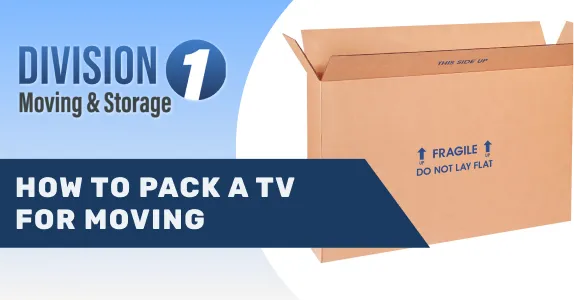
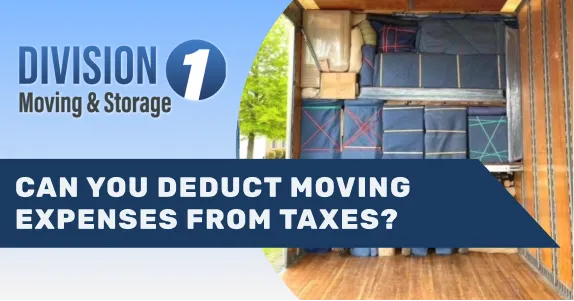

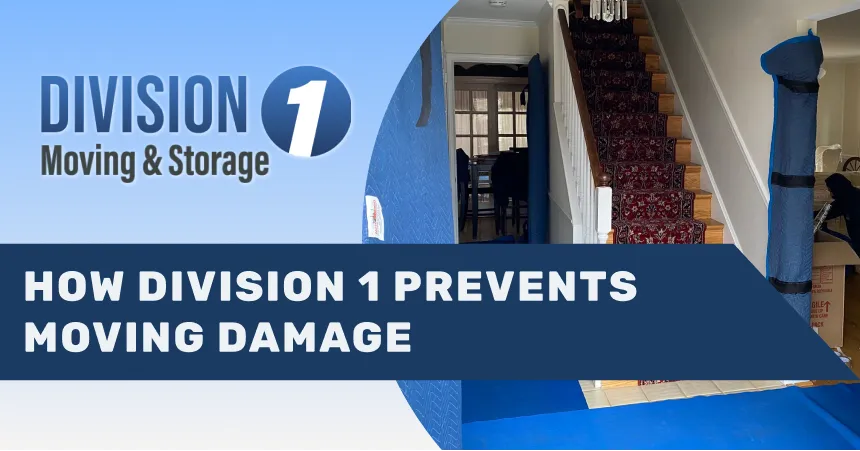

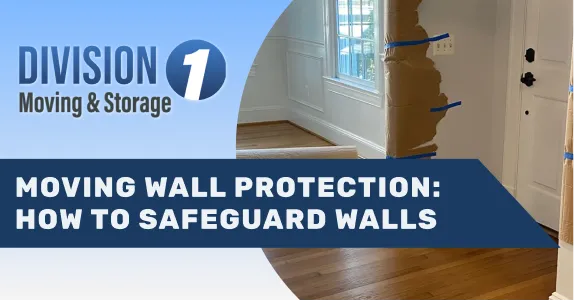
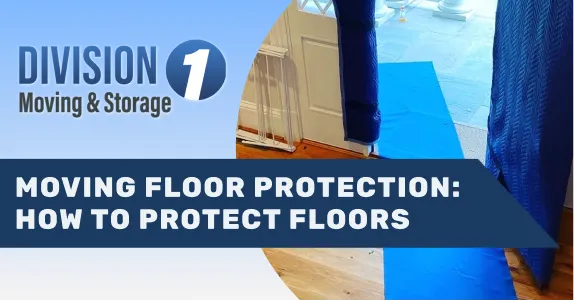

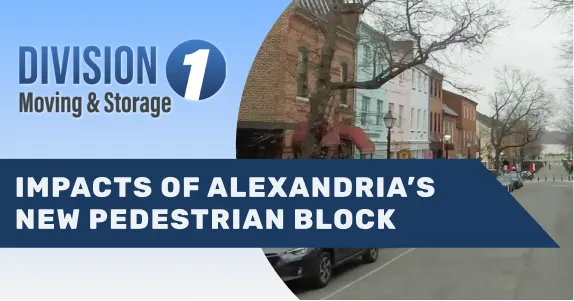




















.webp)


